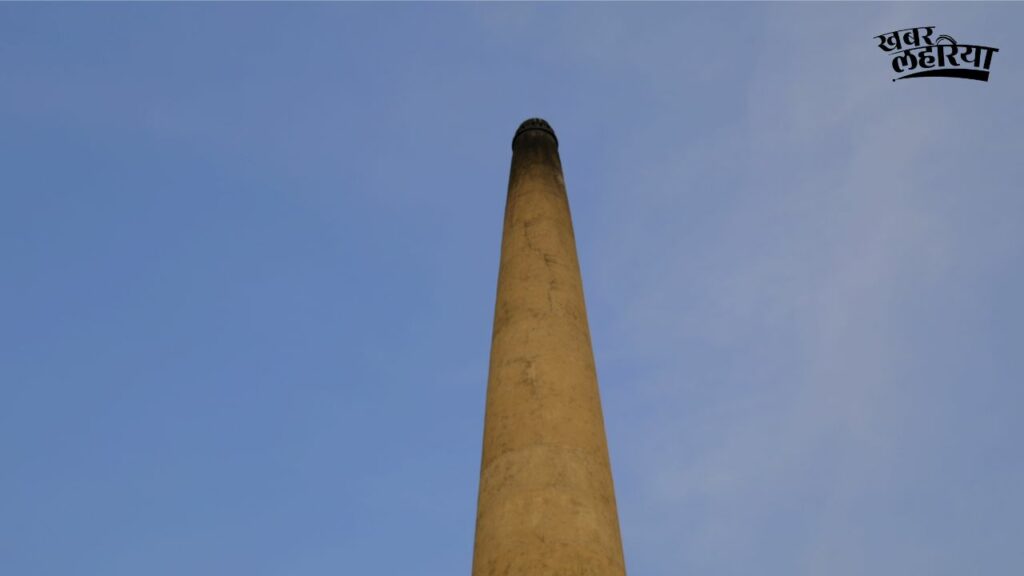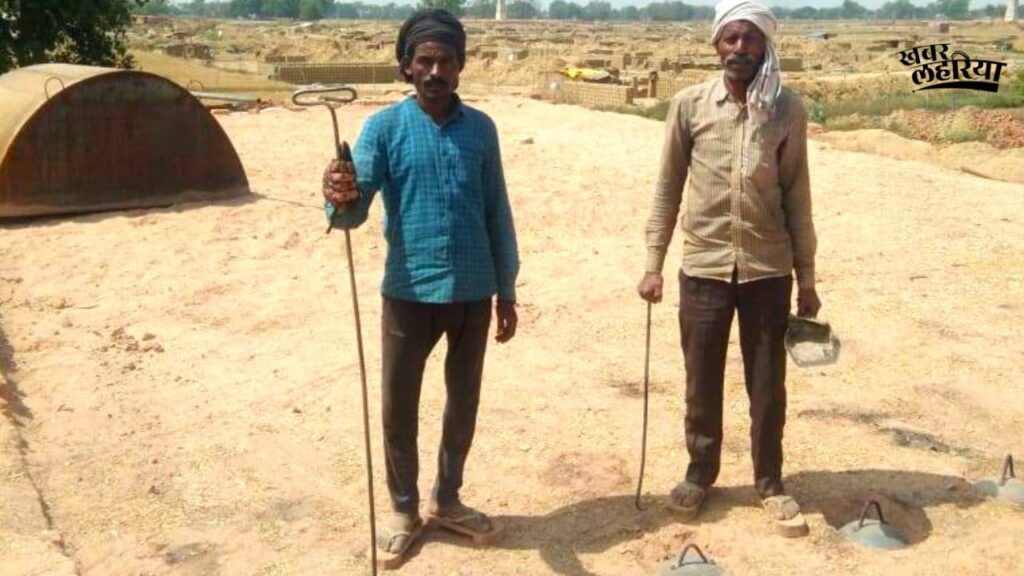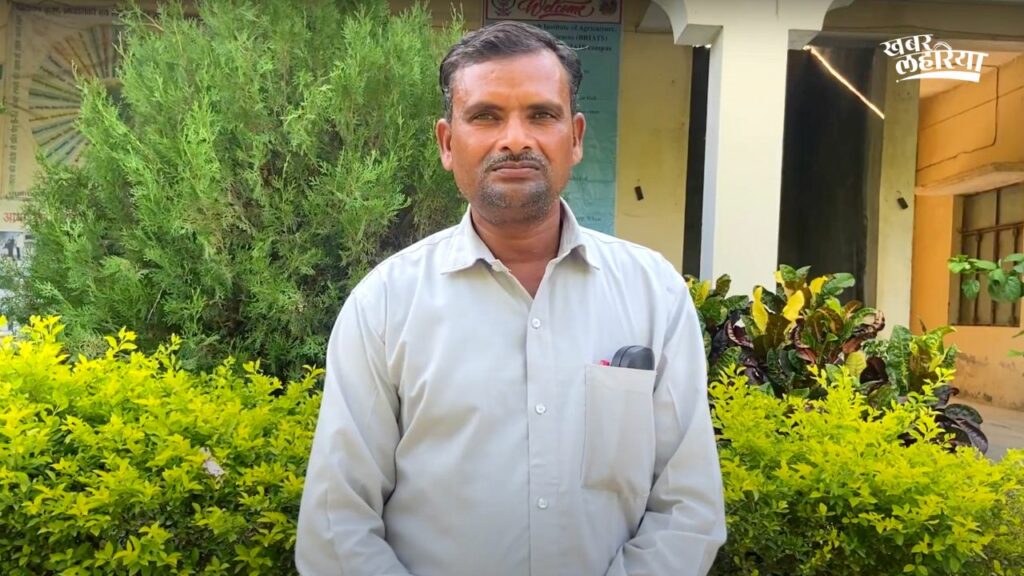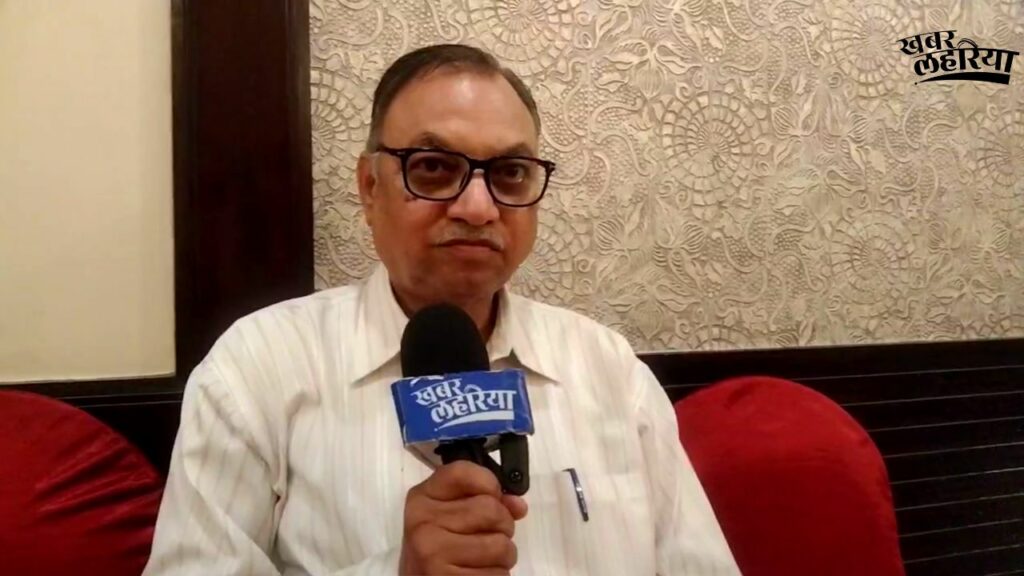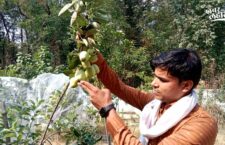Both traditional and modern brick kilns have one constant— the firemen.
They are responsible for burning and baking bricks to perfection, making them “brick red.” And the process is not easy— the work demands long hours and plays with fire and smoke, which is risky. Their demand is high, while their work environment and wages are questionable. A significant population of the firemen community lacks access to fundamental rights, including the rights to dignity, health, and safety.
Can skill training be a step towards hundreds of firemen securing their rights? Through various interviews and research analysis, we have settled on some understanding.
Skill Training: A Necessity for Brick Kilns?
“Whether we work with existing systems or new systems come up, we will always need training,” says Ram Sajeevan, a brick kiln worker from Pratapgarh in Uttar Pradesh. “Many poor people derive their income from this work, and training can help them work better,” he adds.
Sajeevan is one of the many brick kilns workers from Pratapgarh and Bareilley who make their way to brick kilns for income. The pattern is intergenerational— many firemen followed their families’ suit.
In 2000, TERI and other organizations launched a joint initiative in eastern Uttar Pradesh to upskill brick kiln firemen. Participants were professionally trained to become firemen and awarded certificates. The outcome was manifold. Their incomes saw an increase. But more than that, people’s attitudes towards those particular workers changed. Multiple examples in this piece outline that firemen post training, were seen as masters of their work with knowledge and expertise.
The training added a layer of dignity and respect that the workers deserve. When empowered with training, firemen can become more confident and perhaps demand facilities for a better work environment, such as shoes, gloves, and masks.
Madan Lal, a fireman in Allahabad, echoes these thoughts. He explains other benefits of skill training for himself. “If we make a mistake, we are often scolded,” he says. “Proper training will help us move forward and perform our jobs well. But we feel hopeless asking our owner to provide us with proper training,” he adds.
For Mahesh, a master fireman in Gopalganj, training opened an opportunity to become a master fireman. “Before PEPUS’s training, I was a fireman. After I received training from PEPUS, I told a brick kiln about it, and they were pleased. They appreciated me and recognized me as a knowledgeable person after training,” he says.
“Trained firemen also earn more,” explains Ram Sajeevan. He cites examples of trained workers earning as much as Rs. 25,000 a month. In his locality, the Paryavaran Evam Prodyogiki Utthan Samiti (PEPUS) organization, a social welfare organization for brick kiln workers, has been organizing regular training workshops for firemen. These involve demonstrative videos shown on a TV screen and doubt-clearing sessions.
Also Read : Varanasi Brick Kiln Leads A Greener Way With Zig-Zag Technology
What does ‘skill training’ entail?
For the past two decades, Dr. Sameer Maithel, a Mechanical Engineer, has been involved in several skill-training programs designed for the various stakeholders of the brick kiln industry. Maithel has over three decades of experience working on developing and disseminating low-carbon and sustainability solutions in the building sector, small enterprises, and urban communities.
Maithel says, “Amongst the kiln workers, brick loaders and firemen must be trained, as their upskilling will help control air pollution.” He further emphasizes that kiln supervisors must receive training.
Maithel raises an essential point of teaching the firemen the science of the brick-burning process in a language that the workers would quickly grasp. He says, “Using aids like animation films and photographs for the classroom training keeps the workers engaged.”
A basic skill-training process has two primary levels of training – classroom training and practical training on the kiln site. The skill training involves knowing the quantities and proportions of material used for burning; regulating the temperature at which the burning must occur. From our conversation with Maithel, we understood that after the training, the workers came out with a comprehensive understanding of the process.
The occupation of a fireman, as we noted earlier, is intergenerational. Often workers have learned the basics of firing and baking by observing and learning from their parents. The skills have been vaguely “passed on,” and their work has no structure. A fireman quips, “I watched YouTube videos, but when we get practical learning, it is then that we learn the skill.”
With the transition to newer brick kiln systems like zig-zag, master firemen Mahesh stresses the increasing importance of training, saying, “I am apprehensive since I do not have experience with zig-zag technology. We will only cause losses for the kiln if we don’t know anything. Hence we need proper training.”
According to Sameer, the entire act of classroom training makes the workers feel happy about themselves. It makes them feel essential and well-respected.
Certification as a Step toward Respect & Better Wages
Maithel constantly stresses the need for a basic skill-training program of 30-50 hours where they are taught the basics of safety, techniques, and their rights. He strongly advocates for skill training, which adds to the laborers’ market value.
He says, “This will at least grant them a certificate. Most laborers don’t prefer going to the same kiln for a new work season. This certificate will help them negotiate their value better with potential employers.”
Hare Ram, the manager at PEPUS, has observed owner-employee relations in brick kilns for several years and is of the opinion that master firemen have better recognition and respect from brick kiln owners.
“The master fireman is the only employee whom brick kiln owners may offer tea. With other laborers, the relationship is strictly master-laborer,” he says.
There is a good reason for such behavior— master firemen handle approximately 8-10 brick kilns for the owner and are adept at advanced firing techniques. Master firemen are the managers of all other firemen and the baking operations. They also know the orientation and work-hows of the kiln and can be relied upon to integrate traditional and modern ways.
Mahesh somewhat agrees with this description. He studied till high school and started working at brick kilns. In 2010, he received training from PEPUS on the basics for master firemen, including information on firing, baking, and flame management.
He received a certificate and has seen some difference it makes for him. “People are confident in my skills and view me with high regard vis-a-vis my work. The information we received is also useful and much needed,” he comments.
A certificate did help in achieving small milestones of recognition, respect, and dignity, but Mahesh feels there is still a lot to be done. Mahesh flags the issue of non-work months. He says, “We work for only five or six months at max, from November to June, subject to rain. The rest of the months, we do not have any work.”
Mahesh receives about Rs.15,000 per month, with which he takes care of his wife and four children. Hence, most savings from the working months go into sustaining the months without work.
Yasa Devi, Mahesh’s wife, looks after four children, two of whom are studying at university. With fewer wages and no work for six months, she has taken a loan to pay university fees. Having completed a Bachelor’s degree, she is compelled to look after the family and their small farm. The master fireman’s salary “is not enough to sustain us through inflation,” she says.
Hare Ram acknowledges the financial problems of the workers and highlights PEPUS’ focus on the families of master firemen working since they migrate and leave their families behind. PEPUS has, for example, initiated skill training and the formation of self-help groups.
Ratan Kumar Srivastava, Chairman, Uttar Pradesh Int. Nirmata Samiti agrees “1000%” that skill training is necessary for firemen. “A fireman’s work is the most important since he is responsible for the main product,” he says. “But so far, no skill development schemes by the government include training for brick kiln firemen,” he adds.
He also highlights the benefits for both owners and workers. Owners benefit from having skilled firemen on the team who will ensure quality products and lesser supervision.
Mr. Srivastava believes a skilled fireman will know how to fire his kiln most efficiently. The amount of energy consumption in zig-zag kilns is lesser, decreasing the production costs of the kiln owner. This reduction could make way for an increase in firemen’s wages or investment in training and upskilling.
Professional firemen will benefit from increased wages, access to government income schemes like provident funds, and increased recognition for their work.
Newer technology and increased awareness–a way to ensure workers’ safety and health
In traditional brick kilns (Fixed Chimney Bull’s Trench Kiln), workers had to physically enter the flue duct, be there for about 20-25 minutes, and create a wall to increase the flame. This particular step of the brick-baking process in traditional kilns is rather dangerous. However, with zig-zag kilns, workers do not need to physically enter the flue duct due to the presence of a Shunt (an industrial material).
Whereas the transition from traditional to fixed chimneys to zig-zag kilns is a leap in terms of a safer working environment for the firemen, there is a need for more action to ensure workers have access to fundamental rights such as health and the right to safety. For decades, laborers working in brick kilns say their health is never ‘fine.’ Moreover, heat and fire decrease their working shell life, and most workers can work only till their late 40s or early 50s. Summers exacerbate this problem even more. Using proper equipment ensures workers’ welfare, which goes hand-in-hand with respect.
Mahesh notes that the lack of provisions for gloves, masks, shoes, and other helpful equipment jeopardizes their health, especially in the summer heat. He adds that the wooden slippers they get depreciate quickly. By the time new pairs of slippers arrive, their feet are already burned and damaged.
Mr. Srivastava adds another perspective to the safety problem. While he provides firemen with gloves, masks, and shoes, they seldom use them. “They prefer to use their gamcha than masks,” he says. Workers need masks specific to the needs of the job. A fireman will need a different mask based on his job and location. With proper skill training and adequate provisions, firemen can be taught the importance of adequately covering themselves so that they use these amenities.
A known fact about the firemen community is that their lungs get hugely affected due to their work. Mahesh feels the type of fuel used is also to blame. “Agri-waste is bad for our health, while wood briquettes are lakh times better for our health,” he comments.
Apart from providing efficient fuel, brick kiln owners must conduct laborers’ regular health checkups to ensure that their health is being taken care of.
The Way Ahead
From the experiences of laborers and master firemen in traditional and modern kilns, we have learned the importance of training and certification in achieving dignity and respect for them and their work. Presently, brick kiln owners have different relations with different levels of workers in the brick kiln. There is a need to hold talks and integration sessions at varying levels of worker-employer relations.
Changes in techniques and ground-level work from independent organizations have improved the quality of life and recognition of work for brick kiln firemen.
However, for meaningful change, joint efforts of brick kiln owners, government institutions, and social organizations are needed. Despite acknowledging some respect and dignity that training and certification have yielded for him, Mahesh still says, “The work at brick kilns is out of compulsion, and it is troublesome. But, what else to do?”
While Madan Kumar says, “We need the government’s support for skill training.”
This story is part of a media series under Buniyaad, a movement towards a foundational change for a just transition in the brick kln sector, where we will bring social, economic and environmental stories related to equitable change in the brick kiln industry of Uttar Pradesh.
The main objective of this campaign is to work with brick kiln owners, workers, organizations, technical experts and government policy makers to find clean technology for the industry, which can reduce environmental pollution and center and ensure societal welfare benefits for individuals and communities associated with the industry. The Climate Agenda, 100% Uttar Pradesh Network and Chambal Media are a part of this campaign.
This article is written by Nimisha Agarwal.
‘यदि आप हमको सपोर्ट करना चाहते है तो हमारी ग्रामीण नारीवादी स्वतंत्र पत्रकारिता का समर्थन करें और हमारे प्रोडक्ट KL हटके का सब्सक्रिप्शन लें’
